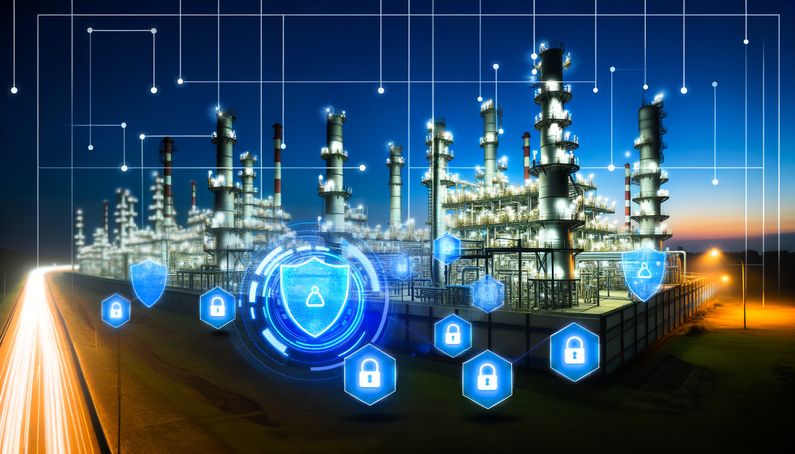
Strengthening Cybersecurity in the Oil Sector: Strategies and Solutions
The cybersecurity landscape for critical infrastructure, particularly in the oil sector, is under increasing scrutiny as threats become more sophisticated. Imagine a world where a single cyberattack could disrupt global energy supplies, causing chaos and uncertainty. This is not just a hypothetical scenario; it’s a real threat that the Cybersecurity and Infrastructure Security Agency (CISA) is actively warning against. Hackers are targeting vital oil infrastructure, highlighting the urgent need for robust cybersecurity measures. Protecting these assets is crucial not only for the companies involved but for the stability of global energy supplies. As cyber threats evolve, organizations must adopt comprehensive strategies to safeguard their operations. This includes enhancing cyber hygiene, implementing network segmentation, and securing remote access, among other measures. By understanding and addressing these vulnerabilities, the oil sector can better protect itself against potential disruptions.
Mitigation Strategies for Cyber Threats in Oil Infrastructure
Enhancing Cyber Hygiene Practices
One of the most fundamental strategies to mitigate cyber threats in oil infrastructure is to enhance cyber hygiene practices. Think of cyber hygiene as the digital equivalent of washing your hands to prevent illness. According to CISA, many cyberattacks on critical infrastructure exploit poor cyber hygiene, such as the use of default passwords and unpatched systems. Organizations should implement regular updates and patches to their systems to close vulnerabilities that could be exploited by attackers. Additionally, changing default passwords to unique and strong ones is crucial in preventing unauthorized access.
Network Segmentation and Isolation
Network segmentation is a critical strategy to protect operational technology (OT) systems from cyber threats. Imagine your network as a ship with watertight compartments; if one compartment floods, the others remain dry. By dividing networks into smaller, isolated segments, organizations can limit the spread of malware and reduce the impact of a breach. CISA recommends using demilitarized zones (DMZs) to separate local area networks from untrusted networks. This approach ensures that even if one segment is compromised, the attacker cannot easily move laterally to other parts of the network. Implementing strict access controls and monitoring traffic between segments can further enhance security.
Securing Remote Access
With the increasing trend of remote work and remote monitoring of industrial systems, securing remote access has become more important than ever. Picture remote access as a secure tunnel through which only authorized personnel can pass. CISA advises using virtual private networks (VPNs) with phishing-resistant multifactor authentication (MFA) to protect remote access to OT assets (CISA). VPNs encrypt data transmitted over the internet, making it difficult for attackers to intercept and decipher. MFA adds an additional layer of security by requiring users to provide two or more verification factors to gain access, thereby reducing the risk of unauthorized access even if credentials are compromised.
Regular Communication with Third-Party Providers
Organizations in the oil infrastructure sector often rely on third-party managed service providers, system integrators, and manufacturers for various services and equipment. Regular communication with these third parties is essential to ensure that they are following best practices in cybersecurity. According to CISA, these providers can offer system-specific configuration guidance to secure OT systems. Establishing clear cybersecurity requirements and conducting regular audits of third-party practices can help organizations identify and mitigate potential risks associated with external partners.
Implementing Business Continuity and Disaster Recovery Plans
Having robust business continuity and disaster recovery plans is vital for minimizing the impact of cyber incidents on oil infrastructure. CISA emphasizes the importance of testing these plans regularly to ensure that they are effective in restoring operations quickly in the event of a cyberattack (CISA). Organizations should develop fail-safe mechanisms, islanding capabilities, software backups, and standby systems to maintain operations during an incident. Practicing reverting to manual controls can also be beneficial in scenarios where automated systems are compromised.
Continuous Monitoring and Threat Detection
Continuous monitoring and threat detection are essential components of a proactive cybersecurity strategy. By implementing advanced monitoring tools and technologies, organizations can detect anomalies and potential threats in real-time. This enables them to respond quickly to mitigate the impact of an attack. CISA recommends using intrusion detection systems (IDS) and intrusion prevention systems (IPS) to monitor network traffic for signs of suspicious activity (CISA). Additionally, leveraging threat intelligence feeds can provide organizations with valuable insights into emerging threats and help them stay ahead of attackers.
Training and Awareness Programs
Human error remains one of the leading causes of cybersecurity incidents. Therefore, training and awareness programs are crucial for educating employees about the importance of cybersecurity and their role in protecting the organization. Regular training sessions can help employees recognize phishing attempts, understand the importance of strong passwords, and follow best practices in cybersecurity. According to CISA, fostering a culture of cybersecurity awareness can significantly reduce the likelihood of successful attacks.
Leveraging Advanced Technologies
As cyber threats continue to evolve, leveraging advanced technologies can enhance the security posture of oil infrastructure. Technologies such as artificial intelligence (AI) and machine learning (ML) can be used to analyze vast amounts of data and identify patterns indicative of cyber threats. These technologies can also automate threat detection and response, enabling organizations to respond more quickly to incidents. Additionally, blockchain technology can be used to secure data transactions and ensure the integrity of critical systems. By adopting these advanced technologies, organizations can stay ahead of cyber threats and protect their infrastructure.
Collaboration and Information Sharing
Collaboration and information sharing among industry stakeholders, government agencies, and cybersecurity experts are essential for combating cyber threats. By sharing threat intelligence and best practices, organizations can learn from each other’s experiences and improve their cybersecurity defenses. CISA encourages organizations to participate in information-sharing initiatives and collaborate with industry peers to enhance their resilience against cyber threats (CISA). Establishing partnerships with government agencies and cybersecurity firms can also provide organizations with access to valuable resources and expertise.
Regulatory Compliance and Standards
Adhering to regulatory compliance and industry standards is crucial for ensuring the security of oil infrastructure. Organizations should stay informed about relevant regulations and standards, such as the North American Electric Reliability Corporation Critical Infrastructure Protection (NERC CIP) standards, and ensure that their systems and practices comply with these requirements. Compliance not only helps organizations avoid legal and financial penalties but also enhances their overall security posture. Regular audits and assessments can help organizations identify areas of non-compliance and take corrective actions to address them.
By implementing these mitigation strategies, organizations in the oil infrastructure sector can significantly reduce their risk of falling victim to cyber threats. While no single strategy can provide complete protection, a comprehensive approach that combines multiple layers of security can help organizations safeguard their critical systems and maintain the integrity of their operations.
Final Thoughts
In conclusion, the threat landscape for oil infrastructure is complex and ever-changing, requiring a multifaceted approach to cybersecurity. By implementing strategies such as network segmentation, securing remote access, and leveraging advanced technologies like AI and machine learning, organizations can significantly bolster their defenses. The importance of collaboration and information sharing cannot be overstated, as these efforts can lead to more resilient security postures across the industry. As CISA continues to provide guidance and resources (CISA), it is crucial for organizations to stay informed and proactive in their cybersecurity efforts. Ultimately, a comprehensive approach that combines technology, policy, and human factors will be key to safeguarding critical oil infrastructure from cyber threats.
References
- CISA warns of hackers targeting critical oil infrastructure. (2024). Bleeping Computer. https://www.bleepingcomputer.com/news/security/cisa-warns-of-hackers-targeting-critical-oil-infrastructure/
- Critical cyber threats targeting US infrastructure: CISA issues urgent warning. (2024). Under Code News. https://undercodenews.com/critical-cyber-threats-targeting-us-infrastructure-cisa-issues-urgent-warning/
- Cybersecurity advisories. (2024). CISA. https://www.cisa.gov/news-events/cybersecurity-advisories



